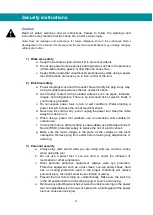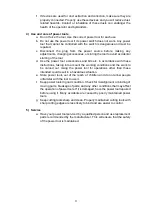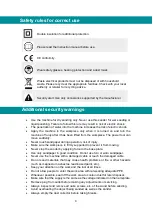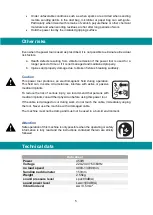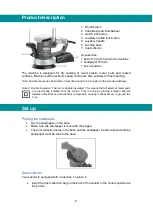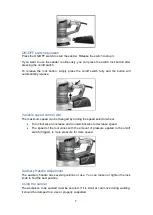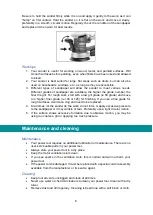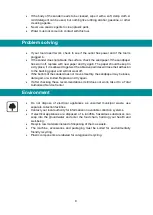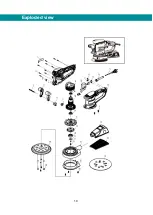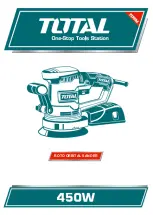
9
•
If the body of the sander needs to be cleaned, wipe it with a soft, damp cloth. A
mild detergent can be used, but nothing like rubbing alcohol, gasoline, or other
cleaning agents.
•
Never use caustic agents to clean plastic parts.
•
Water must not come into contact with this tool.
Problem solving
•
If your tool doesn't work, check to see if the outlet has power and if the tool is
plugged in.
•
If the sander does not abrade the surface, check the sandpaper. If the sandpaper
has worn off, replace with new paper and try again. The paper should be kept in
a dry place, if it is allowed to get wet the abrasive particles will lose their adhesion
to the backing paper and will not wear off.
•
If the bottom of the sander does not move smoothly, the sandpaper may be loose,
damaged, or wrinkled. Replace and try again.
•
If after checking these recommendations it still does not work, take it to a Total
Authorized Service Center.
Environment
•
Do not dispose of electrical appliances as unsorted municipal waste, use
separate collection facilities.
•
Contact your local authority for information on available collection systems.
•
If electrical appliances are disposed of in landfills, hazardous substances can
seep into the groundwater and enter the food chain, harming your health and
well-being.
•
Recycle raw materials instead of disposing of them as waste.
•
The machine, accessories and packaging must be sorted for environmentally
friendly recycling.
•
Plastic components are labeled for categorized recycling.
Summary of Contents for TF2041506
Page 1: ...1 v ROTO ORBITAL SANDER...
Page 10: ...10 Exploded view...
Page 11: ...11 ROTO ORBITAL SANDER...


